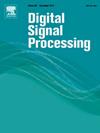FDFNet:基于特征差异化融合的小尺寸表面缺陷高效检测网络
IF 2.9
3区 工程技术
Q2 ENGINEERING, ELECTRICAL & ELECTRONIC
引用次数: 0
摘要
在工业生产中,钢材表面缺陷的实时检测是保证质量的关键因素。此外,钢的表面缺陷是多样和复杂的,特别是当金属结构的增材制造已经广泛应用于工业。它们很容易受到背景干扰的干扰。目前的缺陷检测算法在速度和精度方面还有待进一步提高。本文研究了基于YOLOv9的轻量化检测模型FDFNet快速高精度钢表面缺陷检测问题。首先,针对缺陷与背景之间的对比度,提出了一种对比度有限自适应直方图均衡化(CLAHE)数据增强策略;其次,在主干上构造空间到深度卷积(SPD-Conv),保留更多纹理信息,减少模型参数;此外,颈部设计了差异化融合(DF)模块,以突出不同尺度特征图的一致性和异质性。最后,在nue - det数据集上进行的实验结果表明,与YOLOv9等现有方法相比,本文提出的缺陷检测算法可以提高检测速度和精度。综上所述,该模型在检测效率和精度之间取得了最佳平衡。本文章由计算机程序翻译,如有差异,请以英文原文为准。
FDFNet: An efficient detection network for small-size surface defect based on feature differentiated fusion
In industrial production, real-time detection of steel surface defects is a crucial factor in quality assurance. Furthermore, steel surface defects are diverse and complex, particularly when additive manufacturing of metallic structures have been widely used in the industries. They are easily disturbed by background interference. The current defects detection algorithm requires further enhancement in terms of speed and accuracy. This work investigates the problem of fast and high-precision steel surface defects detection by a lightweight inspection model, FDFNet, based on YOLOv9. First, for the contrast between the defects and the background, a Contrast Limited Adaptive Histogram Equalization (CLAHE) data enhancement strategy is proposed. Second, a SPace-to-Depth Convolution (SPD-Conv) is constructed in the backbone, which retains more texture information and reduce the model parameters. Additionally, a Differentiated Fusion (DF) module is designed at the neck to highlight both the consistency and heterogeneity of feature maps across disparate scales. Finally, the findings of the experiment conducted on the data set of NEU-DET show that the proposed defects detection algorithm can improve the detecting speed and accuracy compared to those of the existing approaches including YOLOv9. To sum up, the proposed model demonstrates an optimal balance between detection efficiency and accuracy.
求助全文
通过发布文献求助,成功后即可免费获取论文全文。
去求助
来源期刊

Digital Signal Processing
工程技术-工程:电子与电气
CiteScore
5.30
自引率
17.20%
发文量
435
审稿时长
66 days
期刊介绍:
Digital Signal Processing: A Review Journal is one of the oldest and most established journals in the field of signal processing yet it aims to be the most innovative. The Journal invites top quality research articles at the frontiers of research in all aspects of signal processing. Our objective is to provide a platform for the publication of ground-breaking research in signal processing with both academic and industrial appeal.
The journal has a special emphasis on statistical signal processing methodology such as Bayesian signal processing, and encourages articles on emerging applications of signal processing such as:
• big data• machine learning• internet of things• information security• systems biology and computational biology,• financial time series analysis,• autonomous vehicles,• quantum computing,• neuromorphic engineering,• human-computer interaction and intelligent user interfaces,• environmental signal processing,• geophysical signal processing including seismic signal processing,• chemioinformatics and bioinformatics,• audio, visual and performance arts,• disaster management and prevention,• renewable energy,
 求助内容:
求助内容: 应助结果提醒方式:
应助结果提醒方式:


